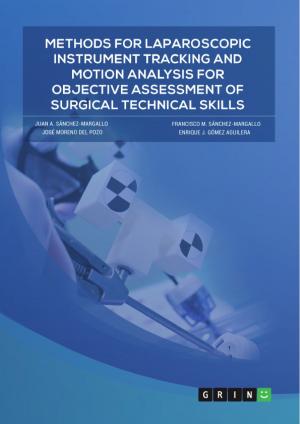IAS 39 - Accounting for Financial Instruments
Accounting for Financial Instruments
Business & Finance, Accounting| Author: | Kathinka Kurz | ISBN: | 9783638314732 |
| Publisher: | GRIN Publishing | Publication: | October 12, 2004 |
| Imprint: | GRIN Publishing | Language: | English |
| Author: | Kathinka Kurz |
| ISBN: | 9783638314732 |
| Publisher: | GRIN Publishing |
| Publication: | October 12, 2004 |
| Imprint: | GRIN Publishing |
| Language: | English |
Diploma Thesis from the year 2004 in the subject Business economics - Accounting and Taxes, grade: 1,0 (A), European School of Business Reutlingen (FH Reutlingen), 61 entries in the bibliography, language: English, abstract: Financial markets have developed extremely in volume and complexity in the last 20 years. International investments are booming, due to the general relaxation of capital controls and the increasing demand of international diversification by investors. Driven by these developments the use and variety of financial instruments has grown enormously. Risk management strategies that are crucial to business success can no longer be executed without the use of derivative instruments. Accounting standards have not kept pace with the dynamic development of financial markets and instruments. Concerns about proper accounting regulations for financial instruments, especially derivatives, have been sharpened by the publicity surrounding large derivative-instrument losses at several companies. Incidences like the breakdown of the Barings Bank and huge losses by the German Metallgesellschaft have captured the public's attention. One of the standard setters' greatest challenges is to develop principles applicable to the full range of financial instruments and implement structures that will adapt to new products that will continue to develop. Considering these aspects, the focus of this paper is to illustrate how financial instruments are accounted for under the regulations of the International Accounting Standard (IAS) 39. It refers to the latest version, 'Revised IAS 39', which was issued in December 2003 and has to be applied for the annual reporting period beginning on or after January 1. 2005. First, the general regulations of this standard are demonstrated followed by special hedge accounting regulations. An overall conclusion that points out critical issues of IAS 39 is provided at the end of the paper. IAS 39 is highly complex and one of the most criticized International Financial Reporting Standards (IFRS). In many cases, the adoption of IAS 39 will lead to significant changes compared to former accounting regulations applied. Therefore the paper is designed to provide a broad understanding of the standard and to facilitate its implementation.
Diploma Thesis from the year 2004 in the subject Business economics - Accounting and Taxes, grade: 1,0 (A), European School of Business Reutlingen (FH Reutlingen), 61 entries in the bibliography, language: English, abstract: Financial markets have developed extremely in volume and complexity in the last 20 years. International investments are booming, due to the general relaxation of capital controls and the increasing demand of international diversification by investors. Driven by these developments the use and variety of financial instruments has grown enormously. Risk management strategies that are crucial to business success can no longer be executed without the use of derivative instruments. Accounting standards have not kept pace with the dynamic development of financial markets and instruments. Concerns about proper accounting regulations for financial instruments, especially derivatives, have been sharpened by the publicity surrounding large derivative-instrument losses at several companies. Incidences like the breakdown of the Barings Bank and huge losses by the German Metallgesellschaft have captured the public's attention. One of the standard setters' greatest challenges is to develop principles applicable to the full range of financial instruments and implement structures that will adapt to new products that will continue to develop. Considering these aspects, the focus of this paper is to illustrate how financial instruments are accounted for under the regulations of the International Accounting Standard (IAS) 39. It refers to the latest version, 'Revised IAS 39', which was issued in December 2003 and has to be applied for the annual reporting period beginning on or after January 1. 2005. First, the general regulations of this standard are demonstrated followed by special hedge accounting regulations. An overall conclusion that points out critical issues of IAS 39 is provided at the end of the paper. IAS 39 is highly complex and one of the most criticized International Financial Reporting Standards (IFRS). In many cases, the adoption of IAS 39 will lead to significant changes compared to former accounting regulations applied. Therefore the paper is designed to provide a broad understanding of the standard and to facilitate its implementation.















